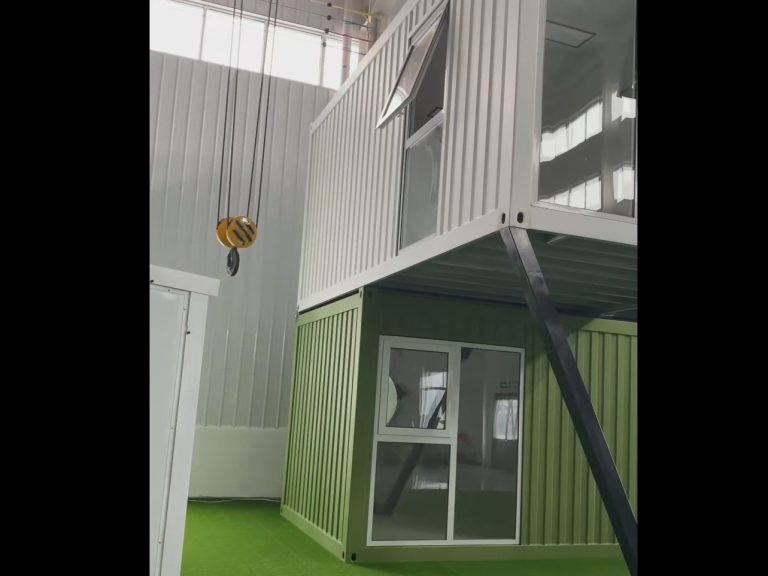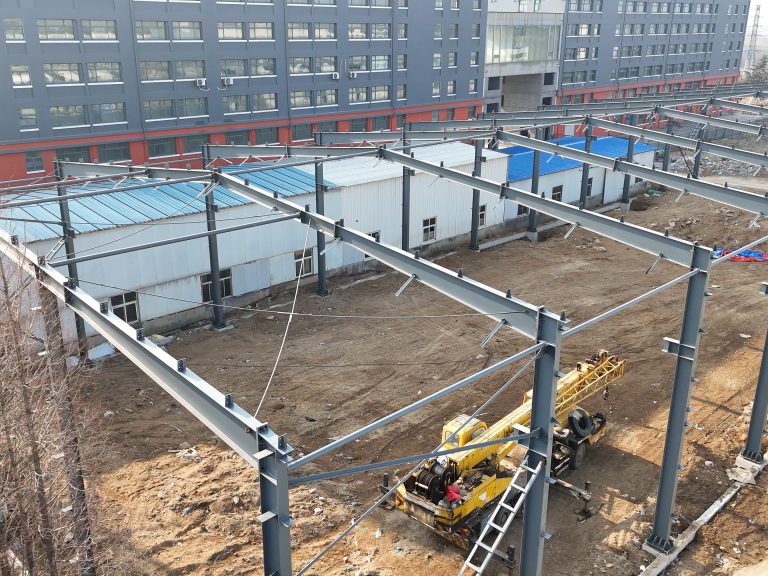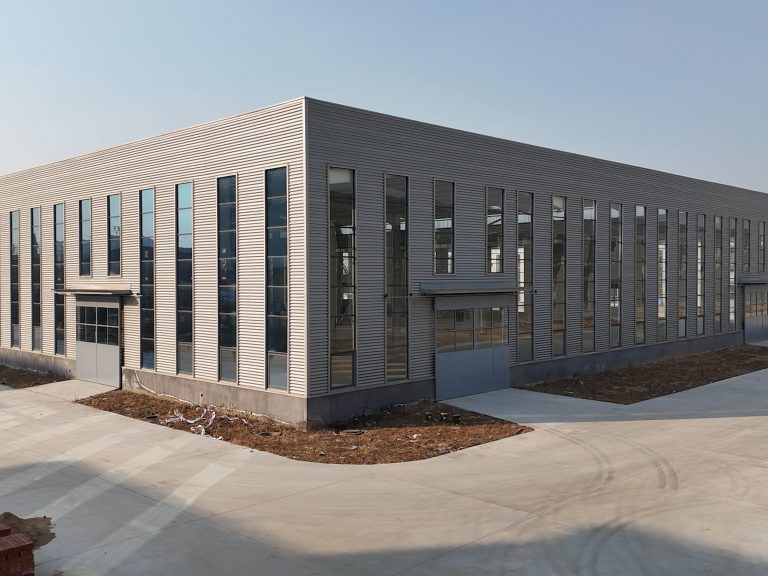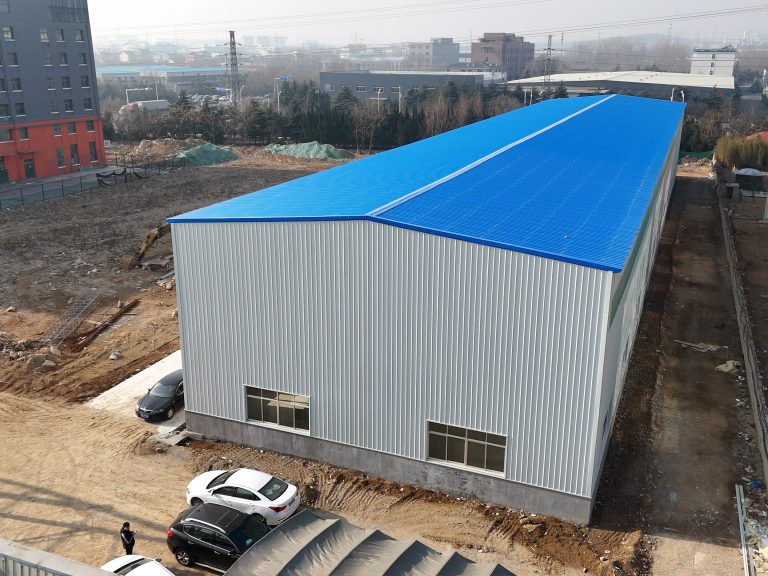Table of Contents
Sustainable Practices in Multi-functional Container House Design for Community Service Facilities
Container houses have gained popularity in recent years due to their versatility and sustainability. These structures, made from repurposed shipping containers, offer a cost-effective and eco-friendly alternative to traditional building methods. In addition to being used as residential dwellings, container houses are also being utilized in community service facilities for a variety of purposes.
One of the key advantages of container houses in community service facilities is their multi-functional design. These structures can be easily modified and adapted to suit different needs, making them ideal for a wide range of applications. For example, a container house can be transformed into a classroom, a medical clinic, a community center, or even a temporary shelter in times of crisis.
The flexibility of container houses allows for quick and efficient deployment in emergency situations. In the event of a natural disaster or other emergency, these structures can be rapidly transported to the affected area and set up as temporary shelters or medical facilities. This can help to provide much-needed assistance to those in need and alleviate some of the strain on existing infrastructure.
In addition to their versatility, container houses are also a sustainable choice for community service facilities. By repurposing shipping containers that would otherwise be discarded, these structures help to reduce waste and minimize the environmental impact of construction. Furthermore, container houses can be designed to be energy-efficient, with features such as solar panels, rainwater harvesting systems, and natural ventilation to reduce reliance on traditional utilities.
The design of container houses for community service facilities must take into account the specific needs of the users and the functions of the space. For example, a medical clinic may require separate treatment rooms, waiting areas, and administrative offices, while a community center may need a large open space for gatherings and events. The layout and interior design of the container house must be carefully planned to ensure that it meets these requirements while maximizing efficiency and functionality.
Incorporating sustainable practices into the design of container houses for community service facilities is essential to ensure that these structures have a positive impact on the environment. This can include using eco-friendly materials, implementing energy-efficient systems, and incorporating green spaces into the design. By prioritizing sustainability in the design process, container houses can help to reduce carbon emissions, conserve resources, and create healthier environments for users.
Overall, the multi-functional design of container houses in community service facilities offers a sustainable and cost-effective solution for meeting the needs of diverse communities. These structures can be easily adapted to suit different purposes, provide quick deployment in emergency situations, and promote environmental stewardship through sustainable practices. By embracing the versatility and sustainability of container houses, community service facilities can create spaces that are both functional and environmentally responsible.
Maximizing Space and Functionality in Container House Community Service Facilities
Container houses have gained popularity in recent years due to their versatility and cost-effectiveness. These structures, made from repurposed shipping containers, offer a sustainable and innovative solution for various applications, including community service facilities. By maximizing space and functionality, container houses can serve multiple purposes within a community, providing essential services and amenities to residents.
One of the key advantages of using container houses for community service facilities is their multi-functional design. These structures can be easily customized and adapted to meet the specific needs of different programs and services. For example, a container house can be transformed into a daycare center during the day and a community center in the evenings, maximizing its use and serving a diverse range of residents.
In addition to their flexibility, container houses are also cost-effective compared to traditional building methods. The use of repurposed shipping containers reduces construction costs and time, making them an attractive option for community organizations with limited budgets. By repurposing existing materials, container houses also contribute to sustainability efforts by reducing waste and carbon emissions associated with new construction.
Furthermore, container houses can be easily transported and relocated, making them ideal for temporary or mobile community service facilities. This flexibility allows organizations to respond quickly to changing needs and demographics within a community, ensuring that services are accessible and relevant to residents. Whether used for disaster relief efforts or pop-up events, container houses offer a practical and efficient solution for providing essential services in a variety of settings.
When designing a container house for community service facilities, it is essential to consider the specific requirements of the programs and services being offered. For example, a healthcare clinic may require additional insulation and ventilation to meet regulatory standards, while a food pantry may need secure storage and refrigeration facilities. By working closely with architects and designers, organizations can create a customized container house that meets their unique needs and maximizes functionality.

Incorporating sustainable design principles into the construction of container houses is also important for community service facilities. Features such as solar panels, rainwater harvesting systems, and energy-efficient appliances can help reduce operating costs and minimize environmental impact. By prioritizing sustainability, organizations can demonstrate their commitment to responsible stewardship of resources and inspire others to adopt similar practices.
In conclusion, the multi-functional design of container houses offers a practical and cost-effective solution for community service facilities. By maximizing space and functionality, these structures can serve a variety of purposes within a community, providing essential services and amenities to residents in need. With their flexibility, affordability, and sustainability, container houses are an innovative option for organizations looking to make a positive impact in their communities. By embracing this versatile building solution, community service facilities can create welcoming and inclusive spaces that meet the diverse needs of residents and contribute to the overall well-being of the community.





